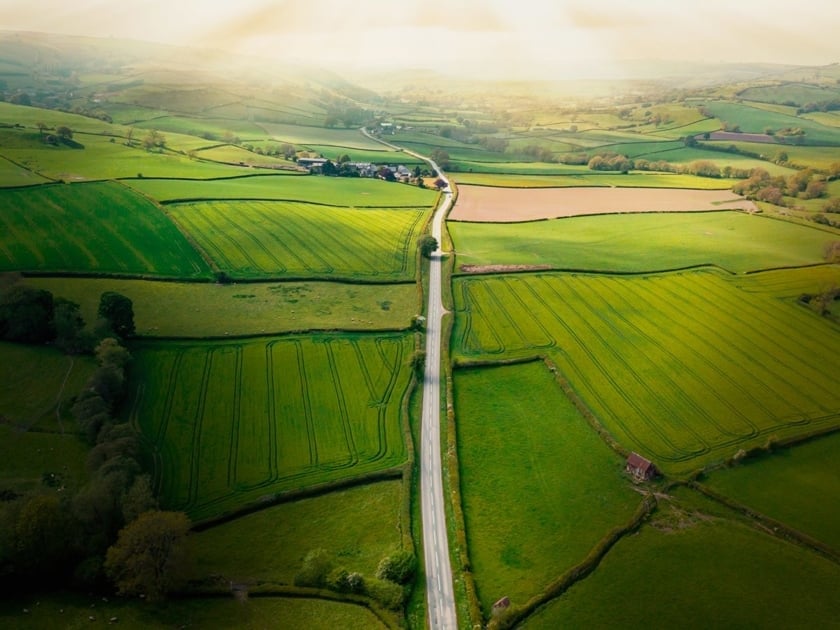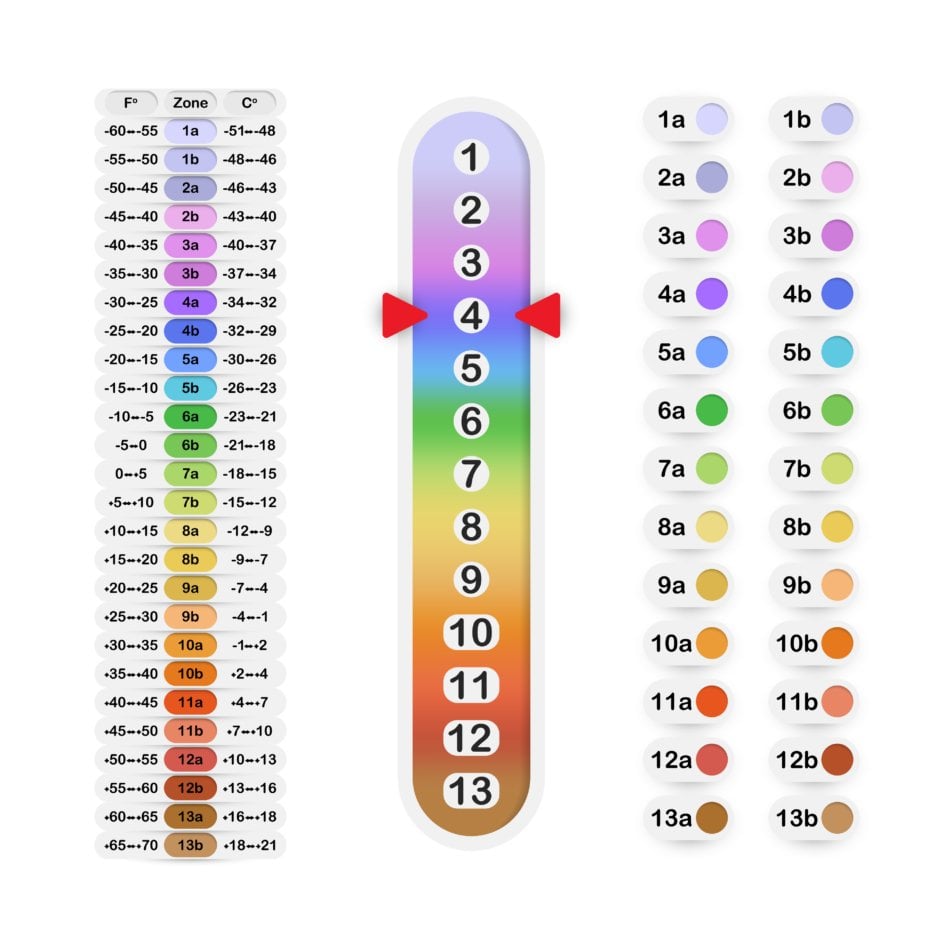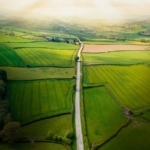Do You Know Your Growing Zone? They Recently Changed

Growing zones are areas on a map that tell you which plants will do best where you live. Also known as “plant hardiness zones” and “gardener’s zones,” growing zones are based on the average lowest temperatures of each region of the US (commonly confused with last frost dates). Paying attention to your growing zone will help to increase your planting probabilities, so that your efforts will be most successful.
For example: If you live in Maine, the growing zone range is approximately 3-6. So, as much as you would love to have orange trees (Zone 8) in your yard, their odds of surviving winter and bearing fruit are slim. They grow naturally as far north as North Carolina. On the other hand, ure pears (similar to Barlett pears), do nicely in Maine (Zone 4).
Find your current growing zone, via USDA.
Look For Zone Numbers On Plant Tags Before Buying
When buying a plant (or seeds) look for the growing zone number on its tag. This number, from 1-13, refers to the lowest temperatures that each plant can withstand without withering away—the lower the number, the lower the temperature it can endure.
For instance, Zone 3 is 10 degrees colder than Zone 4. Sometimes letters “a” and “b” are added to be more specific. Zone 4a has an average lowest temperature of -25 to -30 degrees Fahrenheit, whereas 4b’s lowest temperature is -20 to -25 degrees. Each city within a state can vary.
This information is calculated and updated periodically by the United States Department of Agriculture (USDA), based on a 30 year average of the single lowest temperature recorded.

Do Growing Zones Change?
Growing zones are adjusted on occasion. The first major changes were made in 1990, when scientists at the USDA began looking at climate change data (What’s the Difference Between Weather and Climate?). A shift of the growing zone seemed to be moving north at a rate of 13 miles per decade. The growing zone map was adjusted in 2012 to introduce two new zones: 12 and 13. (Prior to this, the range was only 1-11.) The map was updated in November 2023 to indicate a shift by one-half zone warmer for half of the United States, mostly for the Midwest states. Learn more about the most recent changes.
If the USDA changed the growing zone in your region, don’t worry! Whatever you have planted should continue to grow. However, if you start sowing new seeds into your garden, it’s wise to keep apprised to any changes to growing zone maps.
History Of Growing Zones
During the Great Depression, when people were growing their own food out of dire necessity, researchers began cultivating visual aids to educate people on what crops would yield the best results in the US. Maps were made separating the country into temperature zones. Prior to this, the Farmers’ Almanac was the only way gardeners could get information on the upcoming season in terms of planting.
Join The Discussion
Tell us about your experience using growing zones.
Share with your community in the comments below!

Larry Fleury
Larry Fleury is a writer and outdoor photographer who has a background in atmospheric science, marketing, astrophotography, creative writing, and all things outdoors. His photography has been featured by The Weather Channel, Midwest Living Magazine, and National Geographic Your Shot. Larry lives on the edge of the Ozark Mountain Range in Southeast Kansas, where he spends his free time fishing, camping, hunting, hiking, storm chasing, and playing guitar on the porch.







I moved from the Northeast to the Southeast, on the western coast of Central Florida. I had to spend a lot of time learning about local plants and trees, and I started with the USDA growing zones. Gardening is SO much different here than in the Northeast, or Southern California where I had grown up with two parents who were avid (AVID!) gardeners. They both grew up on farms, and knew what they were doing!
If one of us 4 children wanted one-on-one time with one of our parents, all we had to do was join them in their gardening tasks. We lived on 3 acres about 30 minutes north of downtown LA, near the base of the 6,000 foot mountains that form the northern border of L.A. County. We had chickens and goats and we rescued injured wildlife. I had such a magical childhood, and our gardens and gardening with our parents was a big part of that.
Thanks for sharing your memories Karen! I am one of four too, and we grew up helping my parents with their greenhouse business which was at our house. At the time I hated having to help transplant seedlings, wait on customers, water the plants …but now I can look back and realize how special it was. We had goats, a pony, and chickens before we moved to the greenhouse home. So fun walking down memory lane.